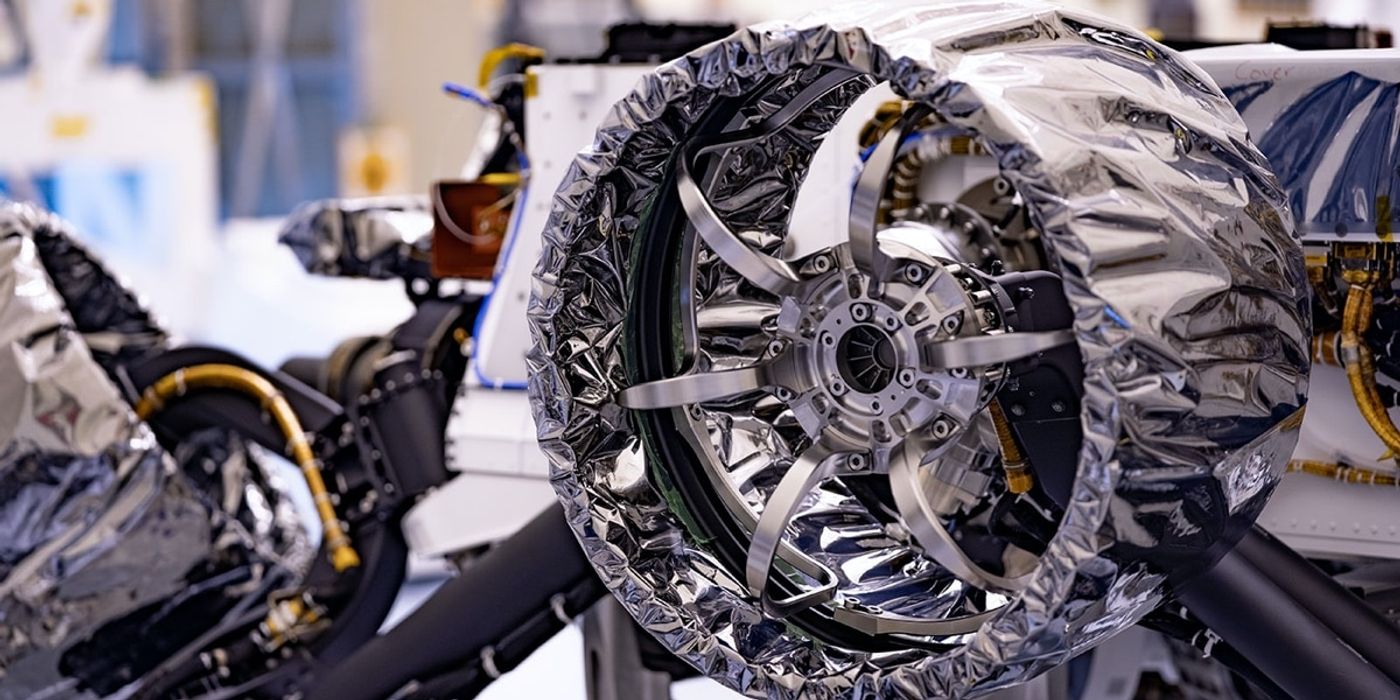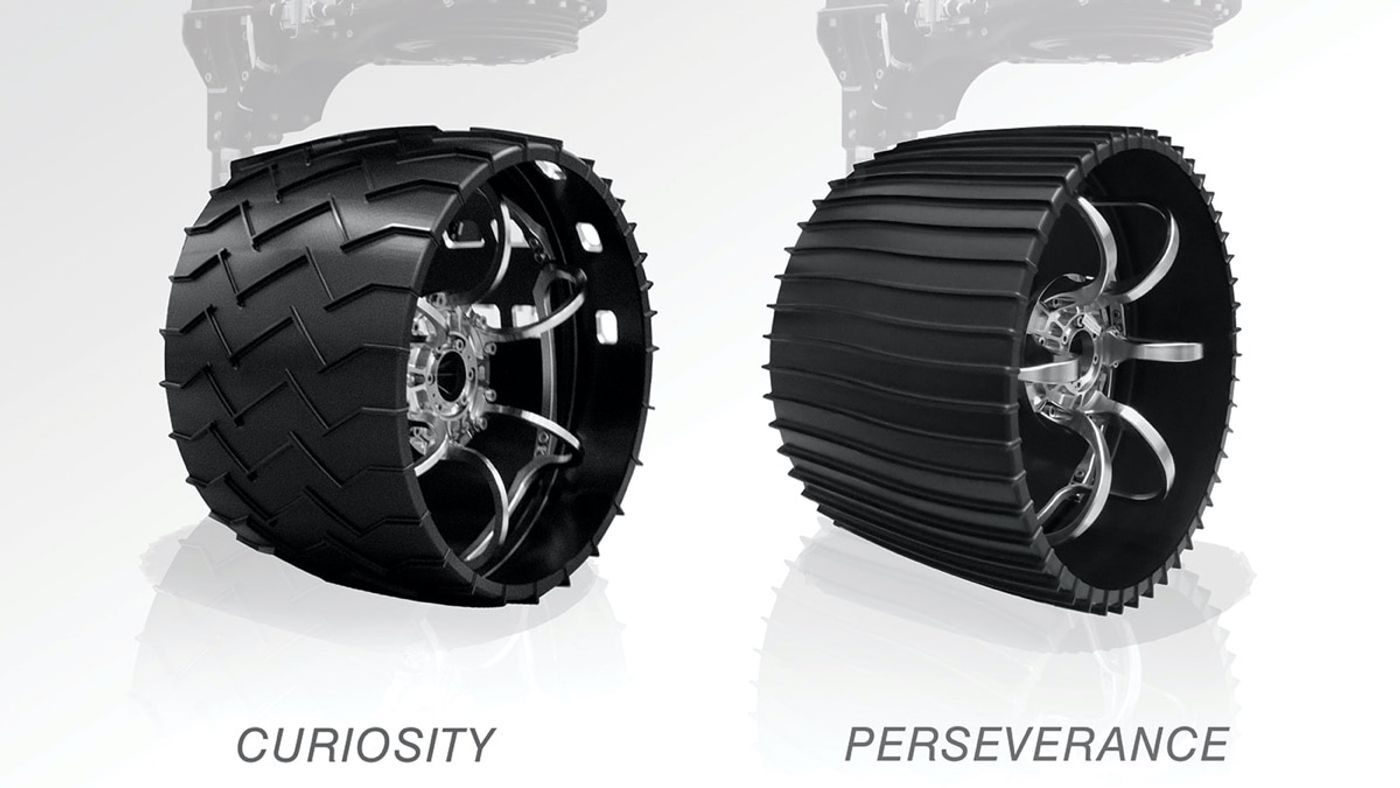NASA Installs the Perseverance Rover's Wheels and Parachute
NASA engineers have been racing against the clock to finish building the Perseverance rover in time for the opportunistic launch window that opens up this Summer. If successful, the American space agency can take advantage of something known as the Hohmann Transfer Orbit, which saves both fuel and time when sending spacecraft to Mars from Earth.
Just a couple of weeks ago, engineers finished mounting critical sampling equipment on the rover’s chassis, including the Adaptive Caching Assembly and the Bit Carousel, which will empower the rover to gather and analyze surface samples on Mars. Fast-forward to now, and Perseverance currently resides further down the assembly line. Just this past week, the rover was fitted with its wheels and air brake (parachute) system.
Image Credit: NASA/JPL-Caltech
If you’ve been paying any attention to the slew of news updates released by NASA lately, then you might’ve noticed that previous postings showed Perseverance with wheels already attached to the chassis. As it turns out, these weren’t the rover’s official space-worthy wheels; rather, as NASA puts it, these were a set of “flight spares” that wouldn’t make the cut for a trip to Mars.
Related: Perseverance is the new name for the Mars 2020 rover
The rover’s new wheels will be the very ones that ship with the package to Mars when it blasts off from a launch pad at Florida’s Cape Canaveral Air Force Station via a United Launch Alliance-made Atlas V 541 rocket this Summer. Perhaps more importantly, they’re distinct from the ones currently being used by NASA’s Curiosity rover:
Image Credit: NASA/JPL-Caltech
In a statement, NASA explains that the wheels are still made from aluminum like Curiosity’s wheels are currently, and that the spokes are made of durable titanium. Right off the bat, you’ll notice that the tread pattern is different. Internal testing shows that these lightly curved tread patterns hold up better to getting battered all day long by sharp rocks than Curiosity’s tread pattern did.
As you might come to expect from an agency as meticulous as NASA, there are some interesting stats to be shared about Perseverance’s parachute system as well. The parachute itself weighs approximately 194 pounds and has been stitched out of durable materials like nylon, Technora, and Kevlar fibers. But perhaps more interesting is the fact that these materials have been packed so tightly into a container that the end product is “as dense as oak wood.”
With as much ingenuity and innovation that has went into making the Perseverance rover, it will be seriously interesting to witness the types of scientific discoveries it will make when it arrives at Mars in February 2021. Perseverance is truly the most advanced rover ever sent to another world.
Source: NASA










